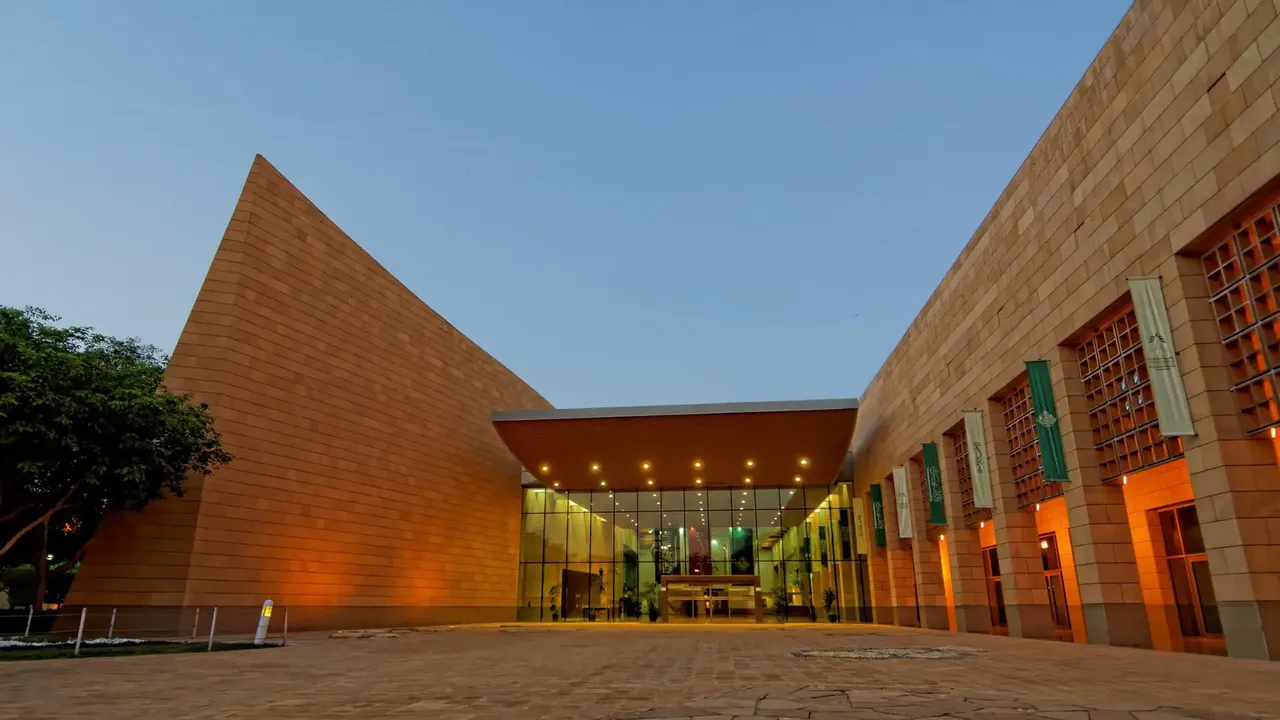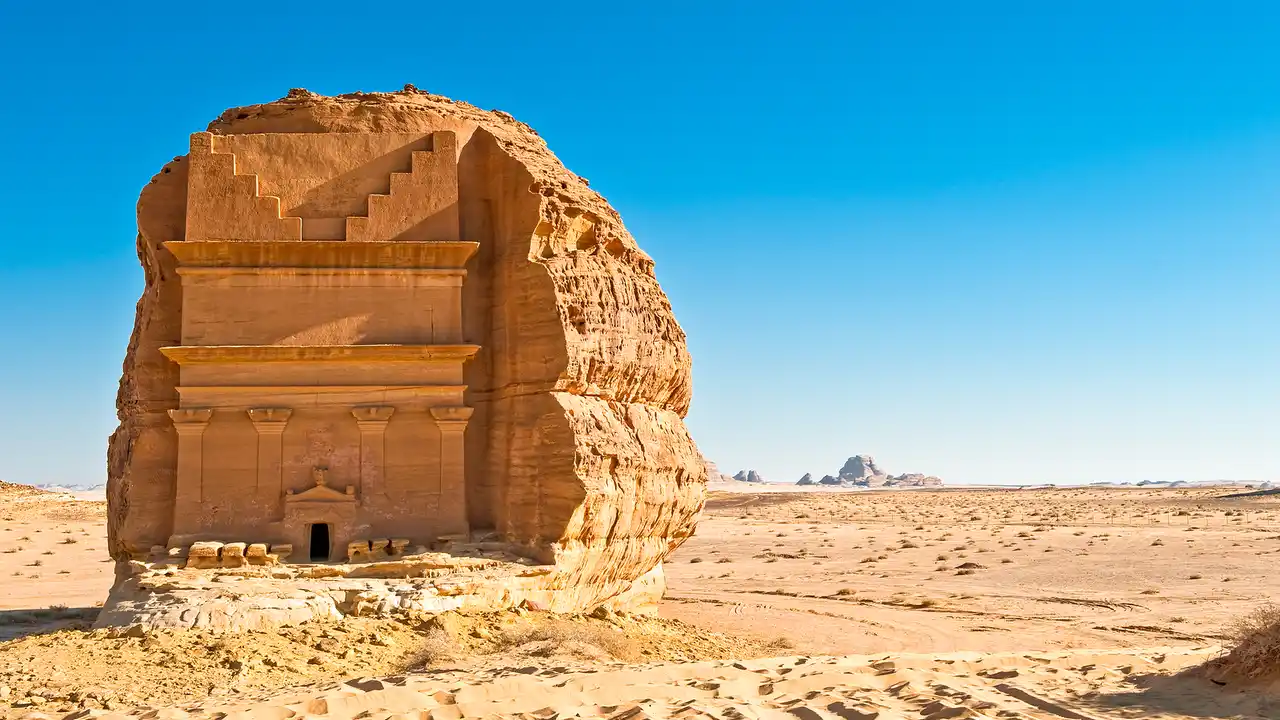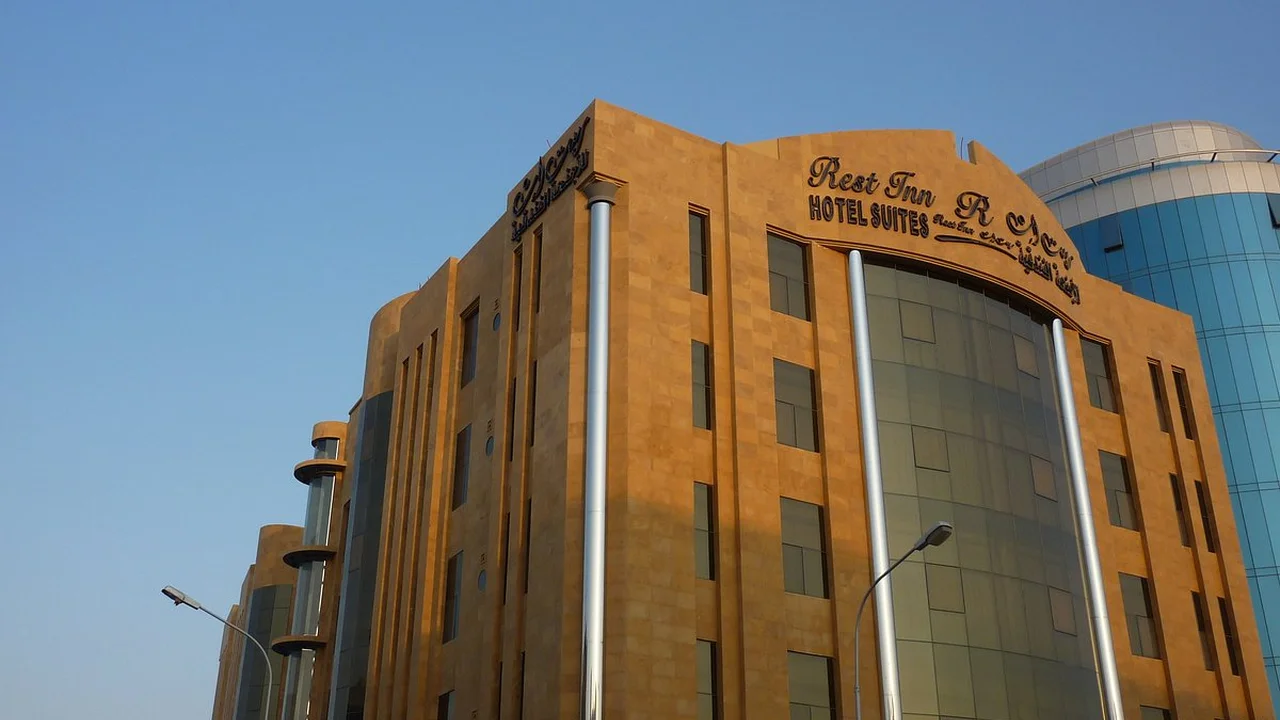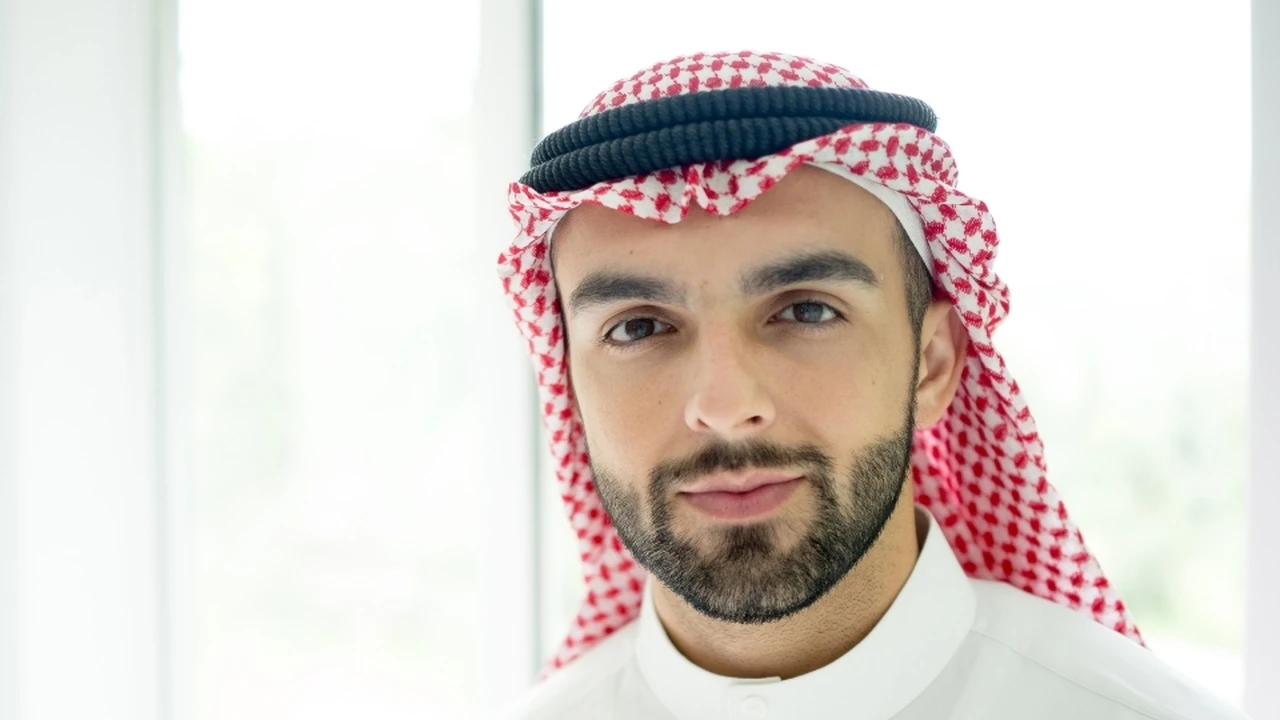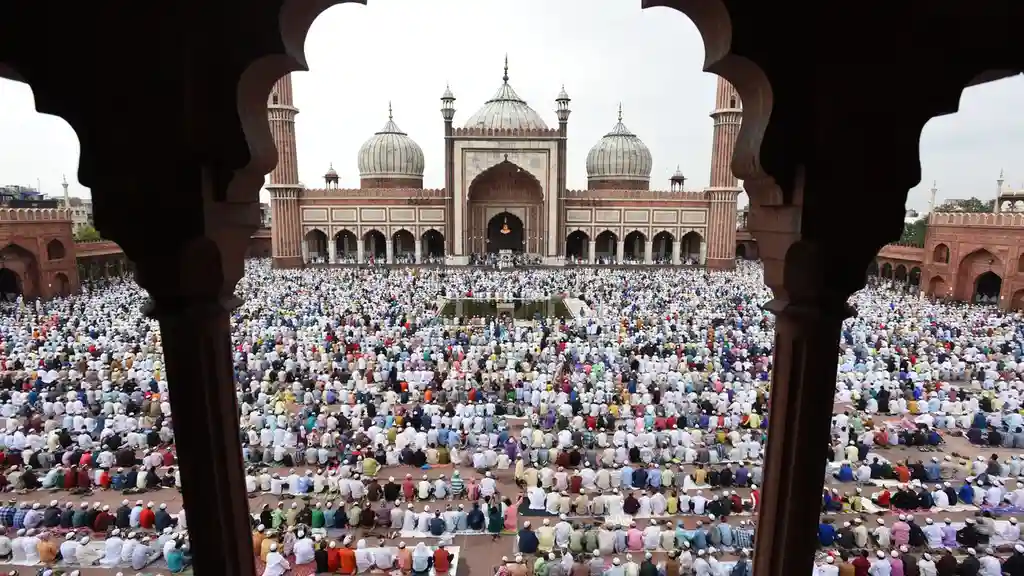
A Journey Through Saudi Arabian Coffee Culture
Coffee, more than just a beverage, is an integral part of Saudi Arabian culture. It's a symbol of hospitality, generosity, and social connection. From the preparation to the presentation, every step is steeped in tradition and history. Let's delve into the fascinating world of Saudi Arabian coffee culture.
The History of Coffee in Saudi Arabia
The story of coffee in Saudi Arabia is intertwined with the history of the Arabian Peninsula itself. Coffee cultivation is believed to have originated in Ethiopia, but it quickly spread across the Red Sea to Yemen and then to the rest of the Arabian Peninsula. Saudi Arabia embraced coffee wholeheartedly, making it a staple in homes, gatherings, and business meetings. Historically, coffee was prepared and served by Bedouins, who considered it a sign of respect and friendship to offer coffee to guests.
The Ritual of Coffee Preparation
Preparing Saudi Arabian coffee, often referred to as "gahwa," is a ritual in itself. It begins with roasting green coffee beans, often over an open fire, until they reach a light to medium brown color. The beans are then ground using a mortar and pestle or a traditional coffee grinder. The ground coffee is added to a "dallah," a traditional coffee pot, along with water and cardamom. Sometimes, saffron, cloves, or other spices are added to enhance the flavor. The coffee is brewed slowly over low heat, allowing the flavors to meld together. The entire process can take up to an hour, highlighting the importance of patience and care in preparing this beloved beverage.
Serving and Etiquette
Serving gahwa is just as important as preparing it. The coffee is poured into small, handle-less cups called "finjan." Traditionally, the host pours the coffee, holding the dallah in their left hand and the finjan in their right. The guest is expected to accept the cup with their right hand as a sign of respect. The cup is usually filled only halfway, and the guest can indicate they have had enough by gently shaking the cup. It's customary to drink at least one cup, and often two or three, as a sign of appreciation for the host's hospitality. Refusing coffee is considered impolite, unless there is a valid reason. The host will continue to offer coffee until the guest indicates they are finished.
The Significance of Coffee in Social Gatherings
Coffee plays a crucial role in social gatherings in Saudi Arabia. It's served at weddings, funerals, business meetings, and casual get-togethers. Sharing coffee is a way to strengthen bonds and build relationships. In many homes, a dedicated coffee corner, known as a "majlis," is set up to welcome guests and serve coffee. The majlis is often decorated with traditional carpets, cushions, and other cultural artifacts, creating a warm and inviting atmosphere. Serving coffee is not just about providing a beverage; it's about creating a sense of community and connection.
Regional Variations in Coffee Preparation
While the basic principles of preparing gahwa remain the same across Saudi Arabia, there are regional variations in the roasting, grinding, and flavoring of the coffee. In some regions, the coffee beans are roasted darker, resulting in a stronger, more bitter flavor. In other regions, saffron is added liberally, giving the coffee a distinct yellow color and a subtle floral aroma. Some regions also add ginger, nutmeg, or other spices to create unique flavor profiles. These regional variations reflect the diverse culinary traditions of Saudi Arabia.
Modern Coffee Culture in Saudi Arabia
While traditional gahwa remains an important part of Saudi Arabian culture, modern coffee culture is also thriving. International coffee chains have become increasingly popular, offering a wide range of coffee drinks, from espressos and cappuccinos to lattes and iced coffees. Local coffee shops have also emerged, blending traditional Saudi Arabian flavors with modern coffee-making techniques. These coffee shops often serve gahwa alongside specialty coffee drinks, catering to both traditional and contemporary tastes. The rise of modern coffee culture reflects the changing lifestyles and preferences of Saudis, while still honoring the rich heritage of coffee in the country.
Dates A Sweet Symbol of Saudi Arabian Hospitality
Dates, the sweet and succulent fruits of the date palm tree, are another iconic symbol of Saudi Arabian hospitality and culture. They are deeply ingrained in the country's history, traditions, and cuisine. Let's explore the significance of dates in Saudi Arabia.
The History of Dates in Saudi Arabia
Date palm cultivation has been practiced in Saudi Arabia for thousands of years. The date palm tree is well-suited to the arid climate of the Arabian Peninsula and has been a vital source of sustenance for centuries. Dates are mentioned in the Quran and are considered a blessed fruit in Islam. Historically, dates were a staple food for Bedouins, providing them with energy and nutrients during long journeys across the desert. Date palm trees also provided shade and shelter, making them essential to the survival of nomadic tribes.
Varieties of Dates
Saudi Arabia is home to a wide variety of dates, each with its own unique flavor, texture, and appearance. Some of the most popular varieties include:
- Ajwa: These dates are grown exclusively in Medina and are considered the most prized variety. They are soft, chewy, and have a rich, caramel-like flavor.
- Medjool: These dates are large, plump, and have a sweet, almost honey-like flavor. They are often referred to as the "king of dates."
- Sukkari: These dates are soft, golden brown, and have a very sweet, almost sugary flavor.
- Khudri: These dates are dark brown, slightly dry, and have a mild, nutty flavor.
- Safawi: These dates are dark black, chewy, and have a rich, molasses-like flavor.
Each variety of date offers a unique taste experience, reflecting the diverse agricultural landscape of Saudi Arabia.
Dates in Saudi Arabian Cuisine
Dates are used in a variety of dishes in Saudi Arabian cuisine. They are often eaten on their own as a snack or dessert. They are also used to sweeten drinks, such as milk and juice. Dates are also incorporated into savory dishes, such as stews and rice dishes, adding a touch of sweetness and depth of flavor. Dates are also used to make date syrup, which is a popular ingredient in many Saudi Arabian desserts.
Dates as a Symbol of Hospitality
Dates are traditionally served to guests as a sign of hospitality in Saudi Arabia. They are often served alongside coffee, creating a welcoming and generous atmosphere. Offering dates to guests is a way to show respect and appreciation for their visit. Dates are also given as gifts during special occasions, such as Eid and Ramadan. The act of sharing dates is a symbol of friendship, goodwill, and generosity.
Dates During Ramadan
Dates play a particularly important role during the holy month of Ramadan. Muslims break their fast each evening with a date, following the tradition of the Prophet Muhammad. Dates provide a quick source of energy and nutrients after a long day of fasting. They are also considered a blessed food and are believed to have spiritual significance. Many families stock up on dates during Ramadan to share with family, friends, and neighbors.
The Date Palm Tree A Source of Life
The date palm tree is more than just a source of dates; it's a symbol of life and prosperity in Saudi Arabia. The tree provides shade, shelter, and food, making it essential to the survival of communities in arid regions. The date palm tree is also used to make a variety of products, including baskets, mats, and furniture. The leaves of the date palm tree are used to make traditional handicrafts, and the trunk is used for construction. The date palm tree is a valuable resource that has sustained communities in Saudi Arabia for centuries.
The Art of Henna in Saudi Arabia
Henna, a natural dye derived from the henna plant, is an ancient art form that has been practiced in Saudi Arabia for centuries. It's used to adorn the skin with intricate designs, adding beauty and symbolism to special occasions. Let's explore the art of henna in Saudi Arabia.
The History of Henna in Saudi Arabia
The use of henna dates back thousands of years in the Arabian Peninsula. It was originally used for medicinal purposes, such as cooling the skin and treating skin ailments. Over time, henna evolved into an art form, used to decorate the skin with intricate designs. Henna is mentioned in ancient texts and is believed to have been used by royalty and commoners alike. In Saudi Arabia, henna has been passed down through generations, with each region developing its own unique styles and patterns.
The Preparation of Henna
Preparing henna involves grinding dried henna leaves into a fine powder. The powder is then mixed with water, lemon juice, and essential oils to create a paste. The paste is left to sit for several hours to allow the dye to release. The quality of the henna paste is crucial to the final result. Fresh, high-quality henna will produce a dark, rich stain, while old or poorly prepared henna may result in a light or patchy stain.
Henna Designs and Symbolism
Henna designs in Saudi Arabia are often intricate and symbolic. Common motifs include floral patterns, geometric shapes, and religious symbols. The designs are often inspired by nature, reflecting the beauty of the desert landscape. Each design can have a specific meaning, representing blessings, protection, or good fortune. For example, floral patterns often symbolize fertility and prosperity, while geometric shapes can represent balance and harmony.
Henna for Weddings
Henna is an essential part of wedding celebrations in Saudi Arabia. The bride is often adorned with elaborate henna designs on her hands and feet, symbolizing beauty, good luck, and blessings for her marriage. The henna application is often a festive occasion, with family and friends gathering to celebrate and offer well wishes to the bride. The henna designs can take several hours to apply, and the bride is often pampered and cared for during the process.
Henna for Eid
Henna is also commonly used during Eid celebrations in Saudi Arabia. Women and girls decorate their hands and feet with henna designs to celebrate the joyous occasion. The henna designs are often festive and colorful, reflecting the celebratory spirit of Eid. Applying henna is a way to express joy, beauty, and cultural pride.
Modern Henna Art
While traditional henna designs remain popular, modern henna artists are also experimenting with new styles and techniques. They are incorporating contemporary designs and incorporating different colors and embellishments. Modern henna art is a fusion of tradition and innovation, reflecting the evolving tastes and preferences of Saudi Arabian society.
Traditional Saudi Arabian Clothing
Traditional Saudi Arabian clothing is a reflection of the country's culture, climate, and religious beliefs. It's designed to be modest, comfortable, and practical for the desert environment. Let's explore the key elements of traditional Saudi Arabian clothing.
Men's Clothing
Traditional Saudi Arabian men's clothing typically consists of the following:
- Thobe: A long, loose-fitting robe that is typically white or beige. It's made from cotton or linen and is designed to be comfortable in the hot climate.
- Ghutrah: A square or rectangular piece of cloth that is worn on the head. It's typically white or red and white checkered and is held in place by an "Igal."
- Igal: A black cord that is used to hold the ghutrah in place. It's a symbol of tradition and status.
- Bisht: A long, flowing cloak that is worn over the thobe on special occasions. It's typically made from wool or camel hair and is often decorated with gold embroidery.
The thobe is designed to be loose-fitting and comfortable, allowing for air circulation in the hot climate. The ghutrah provides protection from the sun and sand. The bisht is a symbol of prestige and is worn by dignitaries and royalty.
Women's Clothing
Traditional Saudi Arabian women's clothing is designed to be modest and cover the body. It typically consists of the following:
- Abaya: A long, loose-fitting cloak that covers the entire body. It's typically black, but can also be other colors.
- Niqab: A veil that covers the face, leaving only the eyes visible.
- Hijab: A headscarf that covers the hair and neck.
The abaya is designed to provide modesty and protection from the sun. The niqab and hijab are worn by some women to further enhance their modesty. The specific styles and colors of women's clothing can vary depending on regional customs and personal preferences.
Modern Adaptations
While traditional clothing remains prevalent, there are also modern adaptations in Saudi Arabian fashion. Men are increasingly wearing Western-style clothing, such as jeans and t-shirts, in casual settings. Women are also experimenting with different styles and colors of abayas, incorporating modern designs and embellishments. The evolution of Saudi Arabian fashion reflects the changing lifestyles and preferences of the country's population.
Luxury Travel to Saudi Arabia: Essential Gear and Gadgets
Planning a luxury trip to Saudi Arabia involves more than just booking a five-star hotel. It's about ensuring comfort, convenience, and connectivity throughout your journey. Here are some essential gear and gadgets to consider, along with product recommendations and detailed information.
High-Quality Noise-Cancelling Headphones
Why you need them: Long flights and bustling airports can be tiring. Noise-cancelling headphones provide a tranquil environment, allowing you to relax, sleep, or focus on work.
Product Recommendation: Sony WH-1000XM5
Use Case: Use them on flights, in hotel lobbies, and during tours to minimize distractions and enjoy audio content without disturbance.
Product Comparison: Compared to Bose QuietComfort 45, the Sony WH-1000XM5 offers superior noise cancellation and a more comfortable fit for extended use. Apple AirPods Max provides excellent sound quality but comes at a higher price point.
Details: Features include industry-leading noise cancellation, comfortable earcups, long battery life (up to 30 hours), and touch controls. Available in black, silver, and blue.
Pricing: Around $400.
Portable Wi-Fi Hotspot
Why you need it: Staying connected is crucial, especially when traveling for business or leisure. A portable Wi-Fi hotspot ensures you have reliable internet access, even in remote areas.
Product Recommendation: GlocalMe G4 Pro
Use Case: Use it to access the internet for emails, video calls, navigation, and social media updates. Avoid roaming charges and rely on a secure connection.
Product Comparison: Skyroam Solis X offers similar functionality but has a smaller battery life. TP-Link M7350 is a more budget-friendly option but lacks the global coverage of GlocalMe.
Details: Supports 4G LTE speeds, offers global coverage in over 140 countries, and has a long-lasting battery. It also functions as a power bank to charge your devices.
Pricing: Around $150.
Universal Travel Adapter with Surge Protection
Why you need it: Saudi Arabia uses Type G outlets. A universal travel adapter ensures you can charge your devices safely and efficiently, regardless of the power outlet.
Product Recommendation: EPICKA Universal Travel Adapter
Use Case: Charge your smartphones, tablets, laptops, and other electronic devices without worrying about compatibility issues.
Product Comparison: BESTEK Universal Travel Adapter provides similar functionality but lacks the same level of surge protection. Saunorch Universal Travel Adapter is a more compact option but may not be as durable.
Details: Features multiple USB ports, a USB-C port, and surge protection to safeguard your devices from power surges. It's compatible with outlets in over 150 countries.
Pricing: Around $30.
High-Resolution Camera or Smartphone
Why you need it: Capture the stunning landscapes, historical sites, and cultural experiences of Saudi Arabia in high detail.
Product Recommendation: Sony Alpha 7 IV (Camera) or Samsung Galaxy S23 Ultra (Smartphone)
Use Case: Document your travels with professional-quality photos and videos. Share your experiences with friends and family or create lasting memories.
Product Comparison: Canon EOS R6 (Camera) offers excellent image quality but lacks the same video capabilities as the Sony Alpha 7 IV. iPhone 14 Pro Max (Smartphone) provides a great camera system but may not be as versatile as the Samsung Galaxy S23 Ultra.
Details (Sony Alpha 7 IV): Features a 33MP full-frame sensor, 4K video recording, and advanced autofocus system.
Pricing (Sony Alpha 7 IV): Around $2500.
Details (Samsung Galaxy S23 Ultra): Features a 200MP camera, 8K video recording, and a powerful processor.
Pricing (Samsung Galaxy S23 Ultra): Around $1200.
Portable Power Bank
Why you need it: Keep your devices charged on the go, especially during long days of sightseeing or travel.
Product Recommendation: Anker PowerCore 26800
Use Case: Charge your smartphones, tablets, and other USB-powered devices multiple times without needing to find a power outlet.
Product Comparison: Mophie Powerstation PD offers fast charging but has a smaller capacity. RAVPower 20000mAh Power Bank is a more affordable option but may not be as reliable.
Details: Features a high capacity (26800mAh), multiple USB ports, and fast charging technology.
Pricing: Around $60.
Luxury Travel Pillow
Why you need it: Ensure a comfortable and restful sleep during long flights and car rides.
Product Recommendation: Cabeau Evolution S3 Travel Pillow
Use Case: Use it on flights, trains, and car rides to support your neck and head and prevent stiffness.
Product Comparison: BCOZZY Chin Supporting Travel Pillow offers chin support but may not be as comfortable for side sleepers. Trtl Pillow is a more minimalist option but lacks the same level of cushioning.
Details: Features memory foam cushioning, adjustable straps, and a washable cover.
Pricing: Around $40.
High-End Sunscreen and Skincare Products
Why you need it: Protect your skin from the harsh desert sun and maintain your skincare routine while traveling.
Product Recommendation: EltaMD UV Clear Broad-Spectrum SPF 46 (Sunscreen) and La Mer Crème de la Mer (Moisturizer)
Use Case: Apply sunscreen daily to protect your skin from sunburn and premature aging. Use moisturizer to keep your skin hydrated in the dry climate.
Product Comparison (Sunscreen): Supergoop! Unseen Sunscreen provides similar protection but may be more expensive. Neutrogena Ultra Sheer Dry-Touch Sunscreen is a more affordable option but may not be as effective for sensitive skin.
Product Comparison (Moisturizer): Clinique Moisture Surge provides hydration but lacks the same anti-aging benefits as La Mer. Olay Regenerist Micro-Sculpting Cream is a more budget-friendly option but may not be as luxurious.
Details (EltaMD UV Clear Broad-Spectrum SPF 46): Oil-free, fragrance-free, and suitable for sensitive skin.
Pricing (EltaMD UV Clear Broad-Spectrum SPF 46): Around $40.
Details (La Mer Crème de la Mer): Contains Miracle Broth™ to hydrate and rejuvenate the skin.
Pricing (La Mer Crème de la Mer): Around $200 (for a small jar).
Phrasebook or Translation Device
Why you need it: While English is spoken in many tourist areas, knowing some basic Arabic phrases can enhance your interactions with locals and show respect for their culture.
Product Recommendation: Google Translate App or Pocketalk S Translation Device
Use Case: Communicate with locals in restaurants, shops, and other public places. Understand signs and announcements in Arabic.
Product Comparison: iTranslate Voice offers similar functionality to Google Translate but may not be as accurate. Vasco Translator Mini 2 is a dedicated translation device but is more expensive than Pocketalk S.
Details (Google Translate App): Supports real-time translation of text, speech, and images.
Pricing (Google Translate App): Free.
Details (Pocketalk S Translation Device): Supports translation in over 82 languages and features a built-in camera for translating text.
Pricing (Pocketalk S Translation Device): Around $300.
Luxury Travel Journal and Pen
Why you need it: Document your experiences, reflections, and memories in a stylish and personal way.
Product Recommendation: Moleskine Classic Notebook and Montblanc Meisterstück Classique Pen
Use Case: Record your thoughts, observations, and impressions of Saudi Arabia. Create a lasting keepsake of your luxury travel experience.
Product Comparison (Notebook): Leuchtturm1917 Notebook offers similar quality but lacks the iconic status of Moleskine. Rhodia Webnotebook is a more affordable option but may not be as durable.
Product Comparison (Pen): Parker Sonnet Pen provides a smooth writing experience but lacks the prestige of Montblanc. Lamy Safari Pen is a more budget-friendly option but is not as luxurious.
Details (Moleskine Classic Notebook): Features acid-free paper, a durable cover, and an elastic closure.
Pricing (Moleskine Classic Notebook): Around $20.
Details (Montblanc Meisterstück Classique Pen): Features a handcrafted gold nib and a timeless design.
Pricing (Montblanc Meisterstück Classique Pen): Around $500.
By packing these essential gear and gadgets, you can ensure a comfortable, convenient, and memorable luxury travel experience in Saudi Arabia. Remember to check the latest travel advisories and regulations before your trip.
:max_bytes(150000):strip_icc()/277019-baked-pork-chops-with-cream-of-mushroom-soup-DDMFS-beauty-4x3-BG-7505-5762b731cf30447d9cbbbbbf387beafa.jpg)



